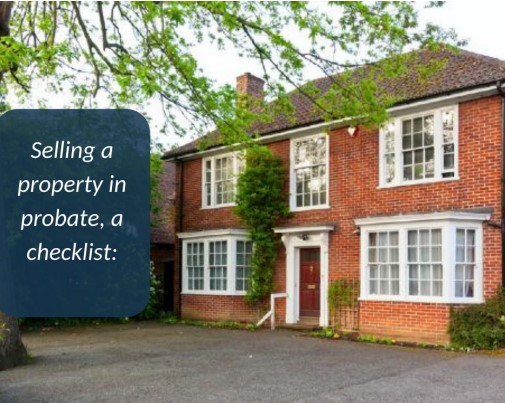What is Chancel Repair Liability?
If you’re buying or selling a house, it’s important to understand the specialist words and phrases involved. Especially when a relatively obscure law from the 16th Century could mean you’re liable for huge bills due to the location of your property. So, what is chancel repair liability, and how could it affect you?
More than 12,000 properties are known to be currently subject to the financial obligations involved, but it’s still possible that homes could be added by the Land Registry, included by mistake. And it’s more common in some areas of the UK, such as East Anglia. Which means you might not have encountered it in the past, or be aware of the problems it could cause.
What does chancel repair liability mean?
If your property was built within a parish containing a medieval church built before 1536, it may be subject to chancel repair liability. This means you could be under a legal obligation to contribute to any repairs needed for the part of the church which contains the alter and immediate surroundings, including the choir and the sanctuary, collectively known as the chancel.
The law was enacted after the dissolution of monasteries by Henry VIII, and their land was sold or given away to private owners. But this came with a ‘joint and several’ liability, which means any one of the affected landowners is responsible for the full amount of the repairs. And that can be massively expensive.
Until 2003, chancel repair liability was largely ignored. This changed when a notable court case reached the House of Lords. This prompted a change in the law in 2012, which allowed churches until October 12th, 2013 to register a notice at the Land Registry against affected properties.
This resulted in around 250 Parochial Church Councils registering notices against more than 12,000 properties. But chancel repair liability can still be applied to new homes in certain conditions. The first is for land which was unregistered, for which the church could register a caution. This means they’re notified of any application for first registration, at which point the chancel repair liability notice can come into effect.
But churches are also still able to register notices against properties that were missed before the 2013 deadline. This right is only ended if the house or property has since changed hands in a financial exchange. So, a sale would remove the right, but receiving a home as an inheritance or gift would still leave it vulnerable.
What can chancel repair liability cost?
In the past, most chancel repair liability costs have been small. Homeowners have been contacted to contribute, or buy their way out of the obligation for sums around £45 or £50.
But it can have far bigger implications. Adrian and Gail Wallbank lost an 18-year legal battle after being presented with a £230,000 repair bill for St John the Baptist church in Warwickshire, with the costs forcing them to eventually sell their farm in 2009.
And more home owners have since been contacted by the Land Registry to inform them of local churches registering rights under chancel repair liability.
The uncertainty of potential costs can make it difficult or impossible to obtain mortgages or home insurance. And it can definitely impact on the market value of your home, and put buyers off.
Performing a chancel repair liability search
You can ask your solicitor to perform a relatively inexpensive chancel repair liability search on any property, or it’s possible to do it yourself. Paying someone to undertake the search will typically cost around £20.
If you want to check your home or a potential purchase, then there are some specialist companies offering chancel repair searches. Alternatively, the National Archives do have a guide for checking chancel repair liabilities in England and Wales (along with a paid search service), although it’s not straightforward as there’s no central register. You’ll need to check property deeds, contact the Land Registry, and the current land owners. Along with knowing the name of the Church of England or Church of Wales parish for the property in 1836.
Chancel Repair Liability Insurance
If you own or might purchase a property on land which is currently unregistered, or hasn’t been sold since 13th October 2013, then it’s possible to take out chancel repair liability, or chancel indemnity insurance.
It’s a one-off payment made during the conveyancing stage of a house purchase, before completion. And you’ll then be covered for 25 years, after which you’ll need a renewal.
You’ll have the choice of No Search Chancel Indemnity Insurance, which is for buyers unaware of any liability, and would be void if this was proved otherwise. Or Chancel Repair (known liability) Insurance, which can be taken if there have been no attempts to cancel the liability or demands and enquiries made or received with church authorities.
The cost will depend on the provider, type of property, location and indemnity limit, but No Search cover can be found from £20, and Known Liability insurance from £40 upwards. And most policies will indemnify you for claims up to £1,000,000 or more.
Selling a home with chancel repair liability
If your home is subject to chancel repair liability and you want to sell, there are still options available.
While the potential financial obligation may be off-putting to potential buyers, if no demands or enquiries have been made, you can explain the relatively simple, and low-cost, insurance options to any potential purchasers.
Alternatively, it’s possible to buy yourself out of the obligation. The cost will depend on your church council, and can range from as little as £50 to tens of thousands.
If you’re struggling to sell your home, or want an option to complete without hassle, then why not get a fast cash offer based on a local property valuation from National Homebuyers. Contact us today on 08000 443 911 or apply online now and a member of our friendly team will be in touch.






